A world wonder: $3M Wellington equestrian barn is largest structure built by 3-D printer
WELLINGTON — From the dirt of Flying Cow Road, the $3 million wonder looks like just another barn. Up close, the bare walls reveal thick, gray, smooth layers of concrete placed on top of each other — and in them lies the magic.
The 10,105-square-foot luxury horse barn is the largest 3D-printed structure in the world. It’s Jim Ritter’s pride and joy — and, he says, the future of building construction for the equestrian world and beyond.
“This is really just the automation of the building industry,” said Ritter, the CEO of the Wellington-based Printed Farms construction company. “This is the start.”
Ritter, a Wellington resident and equestrian, said the horse facility was built by a machine made by COBOD, a corporation based in Denmark. The 3D printer is capable of laying down concrete-based structures.
What cat is that? Mysterious feline captured on camera roaming near Wellington
Wendy Dixon hired Printed Farms to build the facility, which also features a circular hot walker to exercise horses and a manure shed, on her 5-acre property, Nantucket Sports Horses.
Printed Farms built Florida’s first permitted 3D-printed home in Tallahassee and has spent the last few years finding the most economical way to apply the technology to construction.
Ritter said the horse facility was designed to withstand catastrophic weather events such as hurricanes and flooding. He said the concrete-based structure is 10 times stronger than traditional blocks.
“These buildings will last forever,” Ritter said. “I always joke that we'll be diving on these buildings in 200 years when Florida is underwater.”
Remembering Lissa: White rhino who survived horn cancer dies at age 43 at Lion Country Safari
3D Printing construction began as a risk and a learning curve
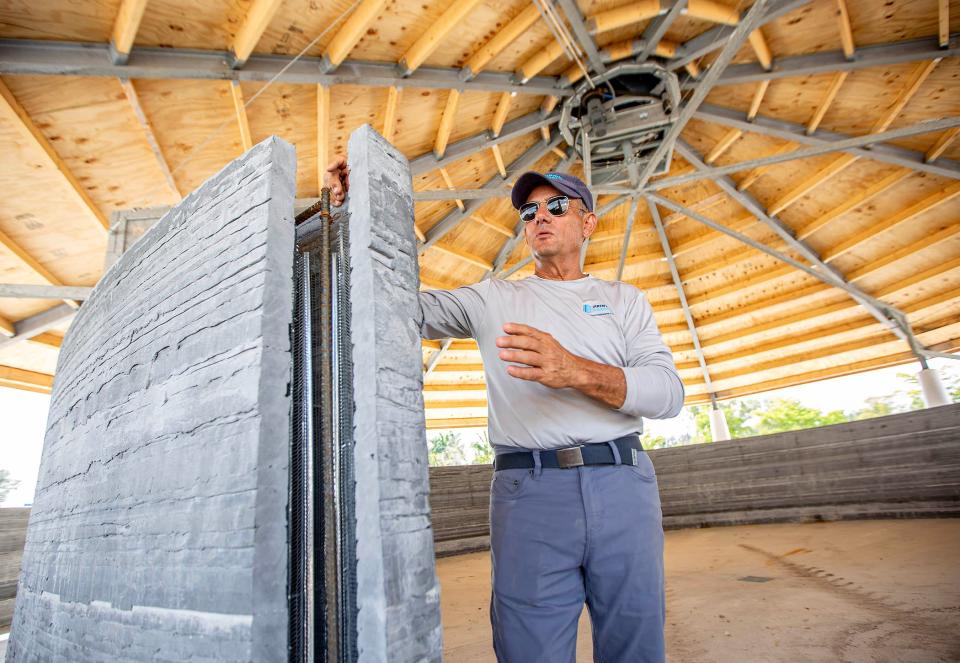
Ritter was developing homes and horse barns in Wellington in 2016 when he saw a machine online that was able to print layers of a material similar to concrete with remarkable accuracy. 3D printing was not a new technology, Ritter said, but using it for construction was a new application.
The machines would require fewer workers on site, reduce not only waste but also the time of construction, and could erect a building that would last at least 100 years.
“Long story short, I jumped in,” Ritter said, adding: “I had never seen a 3D printer until I took this out of the box.”
Equestrian preserve: Reject or delay part of Mark Bellissimo's plan, Wellington board recommends
Using the device, however, came with its challenges.
Despite being able to extrude a concrete-like dough, the machine was not a building tool, Ritter said.
With regular 3D printers, people select a model and wait for the machine to print a replica of the design. Printing homes, however, meant finding the right materials, designing sturdy foundations, engineering the wall composition and establishing a construction pattern and process for the machine and its operators.
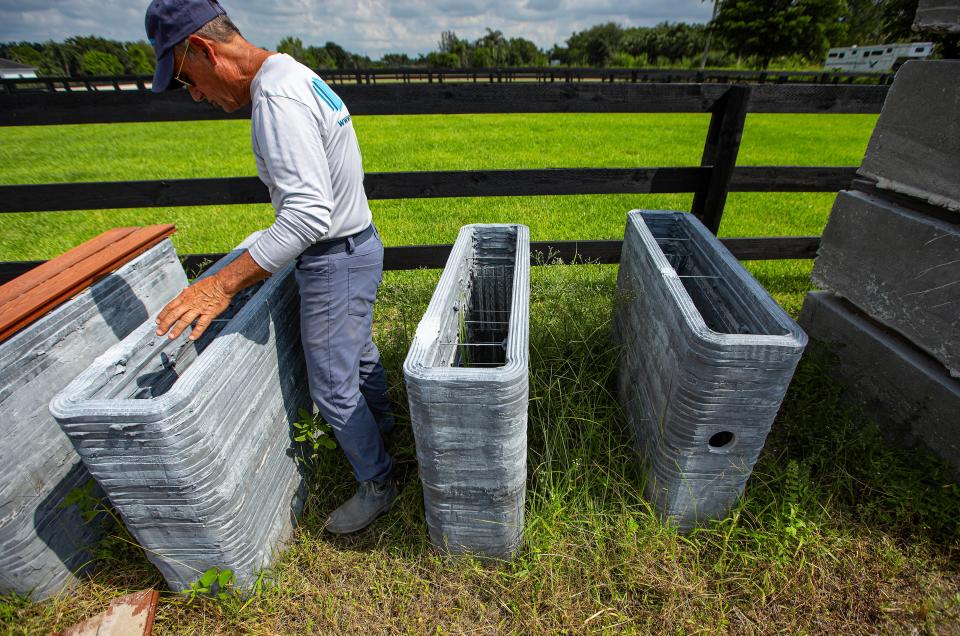
After countless “flowerpot” trials, Ritter’s team became the first to develop a complete 3D construction printing building system named PRINTZ.
In 2020, a year after buying the COBOD device, Printed Farms built what Ritter says is Florida’s first 3D-printed structure. The 672-square-foot storage shed sits in his Wellington barn and took three weeks to make.
In 2021, the company created the first 3D-printed permitted house in Tallahassee. It took nine days to print the interior and exterior walls of the 1,525-square-foot home at a cost of $50,000.
“We're going to build real structures with real problems to solve them,” Ritter said. “That's the only way to further the industry.”
Inside the 3-D barn in Wellington: Stalls, lounges and even a circular horse walker
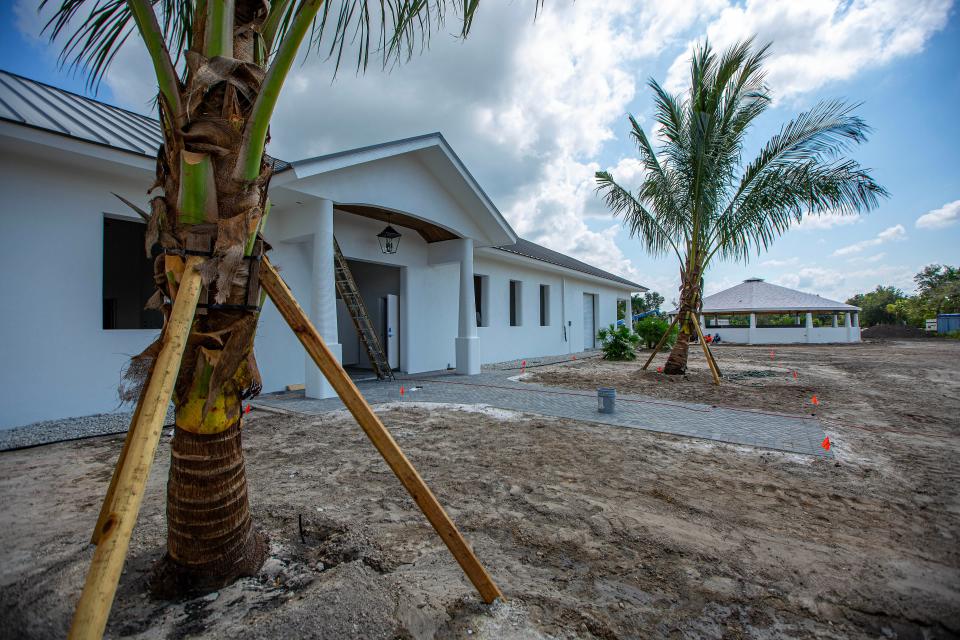
Printed Farms designed the Nantucket Sports equestrian facility to be a luxury horse jumping training center for professional riders. Dixon, who also trains Ritter's son, will also use it to stable competitive horses valued at more than $2 million.
The white barn features 16 horse stalls, multiple grooming areas, a feeding room, a riders’ lounge and a separate manure shed.
To its right, there is a circular, 2,100-square-foot hot walker, a motorized “merry-go-round” to exercise horses that is Printed Farms' first round building.
Unlike traditional block designs, Ritter says, 3D printers allow for a wide range of architectural models and shapes. For example, some columns along the edges of the barn feature square bases that transition into textured, circular pillars.
How does 3-D printing work? It’s all in the mix and the X-Y axis
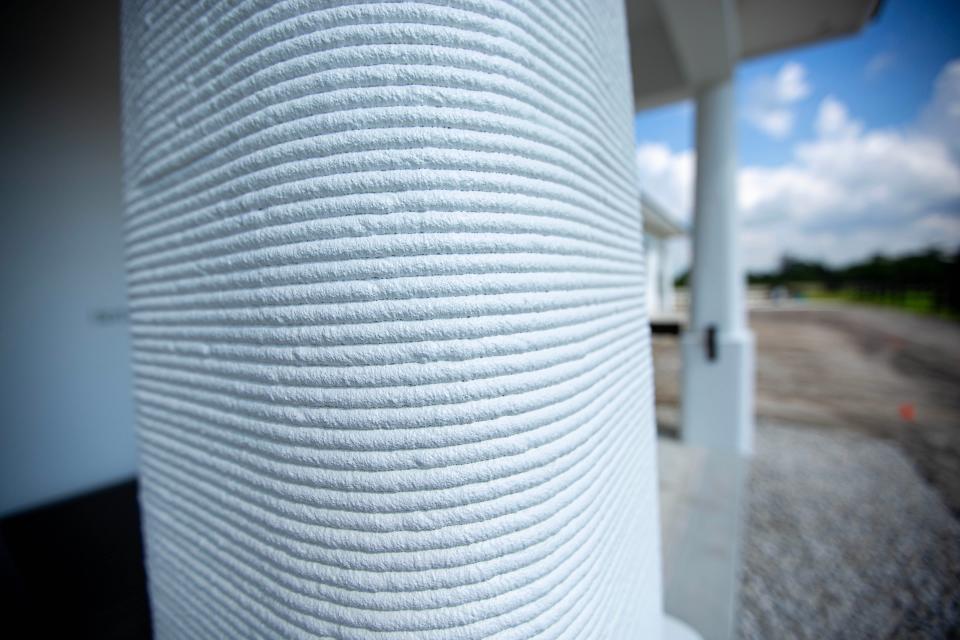
Ritter said most 3D-printed buildings follow the traditional post-and-beam structure. An architect designs the blueprints, an engineer makes the concrete columns and then the machine is carefully placed to print the walls.
Ritter said it all starts with the materials. Printed Farms pours sacks of M68 Laticrete, a green-grayish powder that is part cement and part gravel, onto a yellow silo that mixes it with water. The mixture is dumped into a blue tank and pumped through hoses to the COBOD BOD2 printhead, which looks like a giant pen.
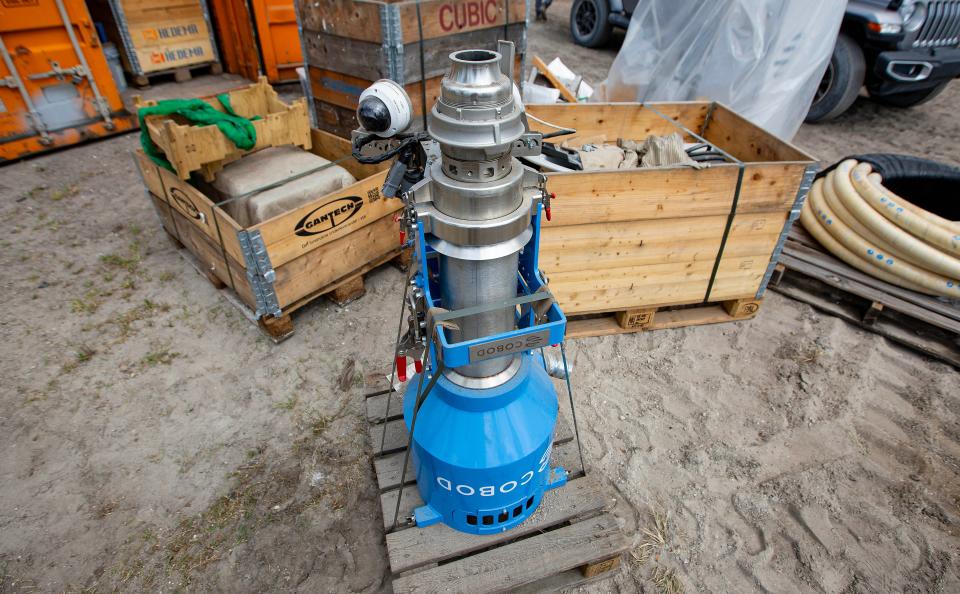
The printhead is fixed over one beam that serves as the X-axis and two others for the Y-axis, allowing the machine to move freely as it extrudes thick lines of dough-like cement.
The layers then dry as one homogeneous structure, one that is as strong as a concrete-insulated structure.
“I realized I could build with a new technology and prove that it's better or make it better,” Ritter said.
3-D, cement block structures differ like electric, gas cars
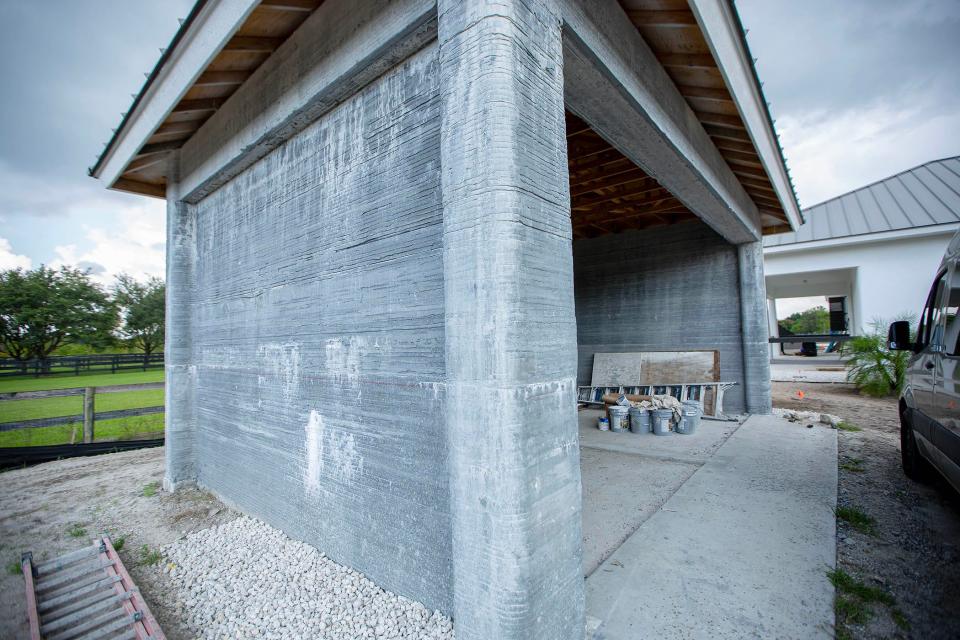
Ritter compared building with traditional block and 3D printing to driving a gas-powered car and an electric vehicle.
“3D printing is an alternative,” Ritter said. “And it's not that we are cheaper. We are better, stronger.”
Ritter said the biggest benefit of 3D-printed buildings is that they are more sustainable, cheaper to maintain and will stand the test of time.
“Block buildings are usually bulldozed after 20, 30 years. They're pretty crap,” Ritter said. “These structures are going to last 100 years. So now you have two, three, maybe five revolutions of buildings that you're not doing.”
Block used in traditional construction is a porous material that requires drywall and stucco for protection because when it gets wet, it breaks down to its smallest form, compromising the foundation of the house.
'We pulled a miracle': School for children with autism relocates to Royal Palm Beach
With a 3D printer, Ritter said the walls are as strong as concrete-insulated structures and are impermeable, mitigating the risks of flooding and mold.
Ritter said the 3D-printed structure also features a hollow-wall design that creates a dead air space and keeps buildings cool without air conditioning. He added costs to maintain the building should be lower because it is cheaper to cool them.
“As soon as you shut off your AC, your house heats up. The air is flowing right through the wall,” Ritter said. “Whereas in this building, you don't get that exchange, so you're not going to get that mold build-up because my print material literally seals.”
Hurdles to 3-D construction remain, starting with building codes
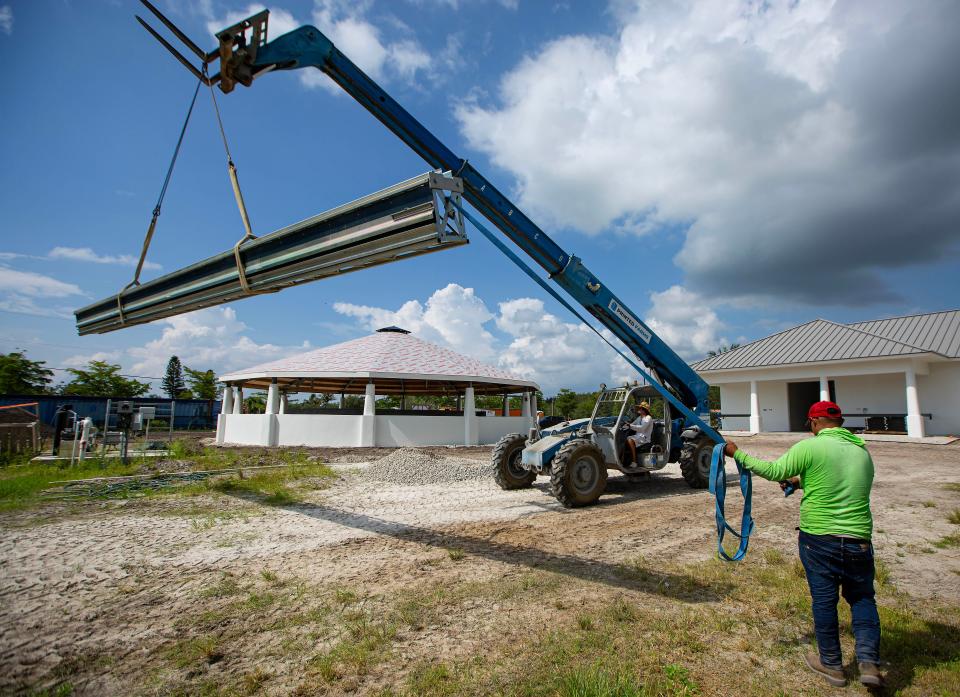
Despite the growing use of 3D printing in the construction industry, Ritter said there are still many hurdles the process has to overcome before it becomes mainstream.
The main concern is that there is no building code for 3D printing.
The foundation for all the rules governing the construction industry is based on traditional building methods, so there aren’t avenues to get permits to 3D print homes. He said most construction accessories are currently made for thinner block structures.
How Wellington is growing: Developers vie to build at park site near mall, but village may say no
“We are creating the standard of the industry,” Ritter said. “We're having to adapt everything until we are a larger industry and then they'll make it for our walls and how we do things.”
Since it is a new technology, he said, they are discovering the best materials, machines and techniques. Ritter said he hopes the projects by Printed Farms will inspire more people and developers to consider 3D printing for construction.
“The more people print, the faster it becomes codified, the faster it becomes mainstream,” Ritter said. “It's like being the first one driving an electric car.”
Valentina Palm covers Royal Palm Beach, Wellington, Loxahatchee and other western communities in Palm Beach County for The Palm Beach Post. Email her at vpalm@pbpost.com and follow her on X, the platform formerly known as Twitter, at @ValenPalmB. Support local journalism: Subscribe today.
This article originally appeared on Palm Beach Post: Wellington Florida barn is world's largest 3D printed structure

